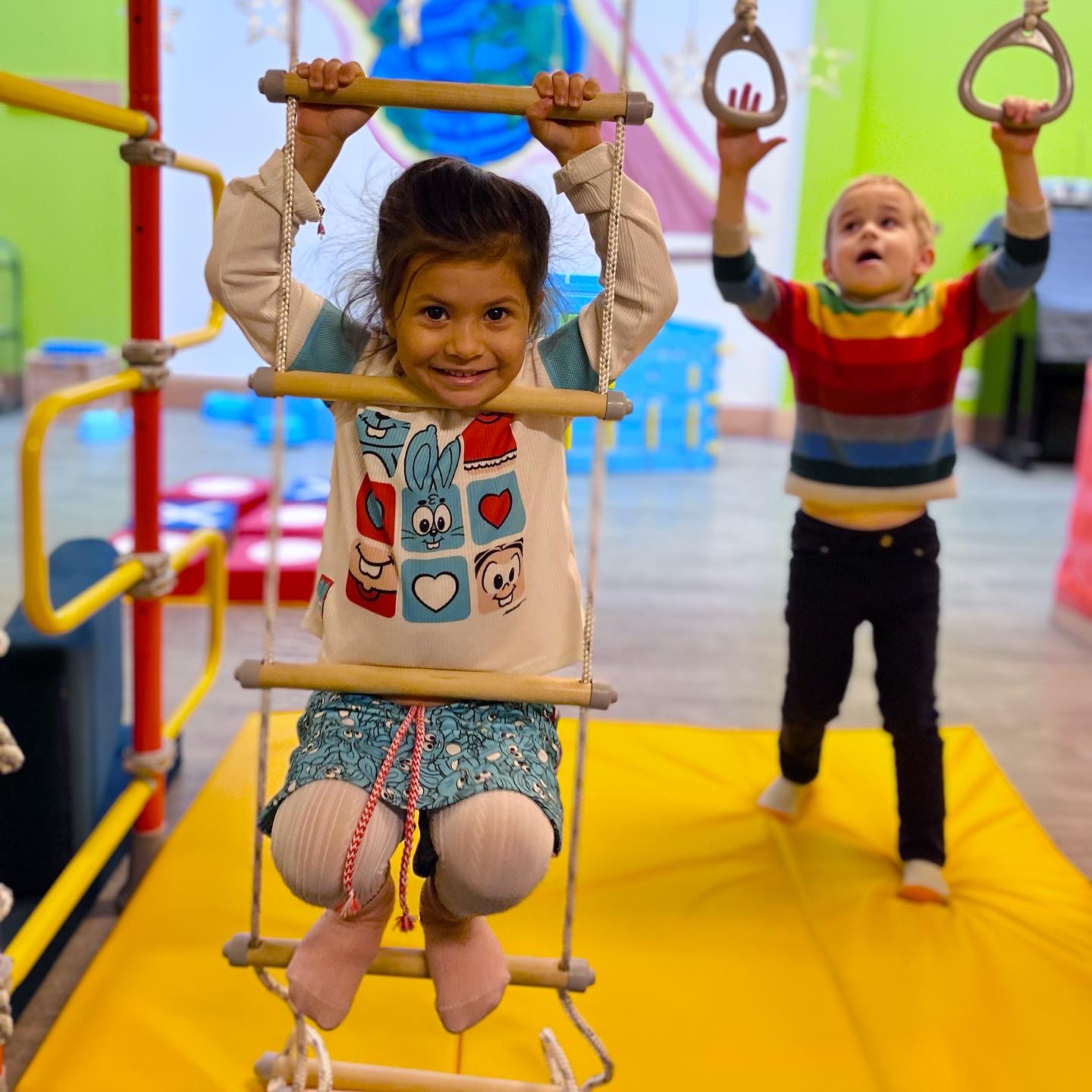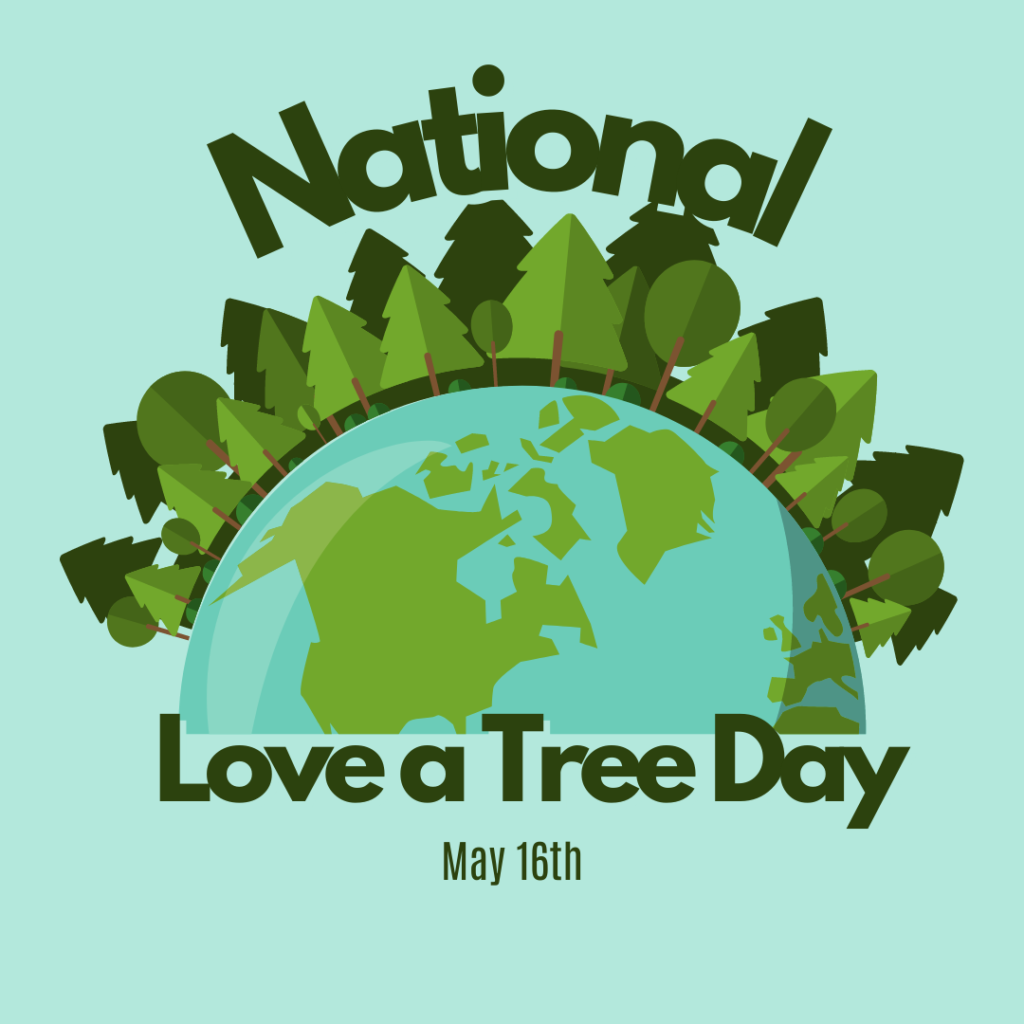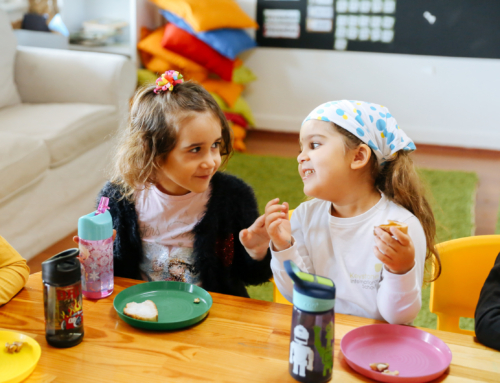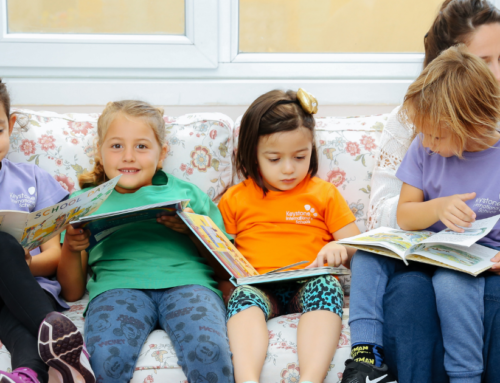Your little peanut is almost ready for school, but how do you decide what kind of educational approach is best suited for your family? When it comes to our children’s education, we want to make sure that we have done our research.
In the early years, there are 3 different methods that we commonly come across. Understanding the key differences will help you make a decision for your little one.
Not only you should consider your family’s views on these approaches but also how your child may thrive in these different environments. For example, while Montessori method focuses on independent learning in a structured environment, Reggio Emilia approach emphasizes collaborative learning in a more free/open setting.
Let’s take a closer look at these 3 methods.
1. Montessori Method
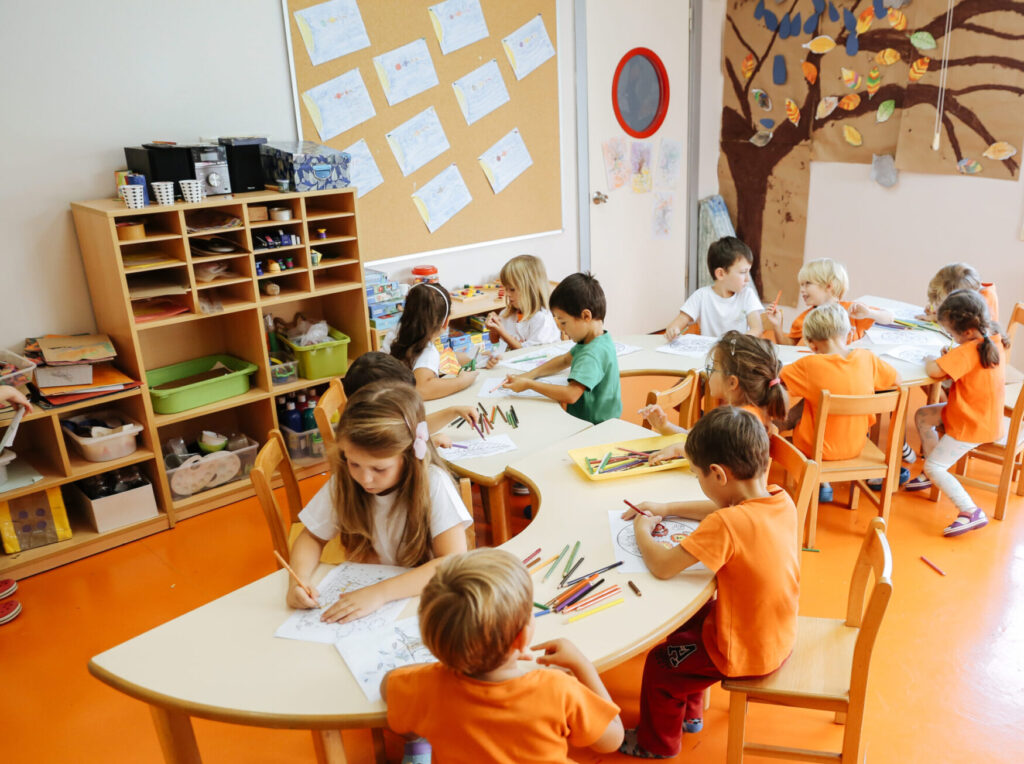
Keystone Montessori style class set-up
This approach was developed by Dr. Maria Montessori in the early 1900s. The Montessori Method values a child’s independence above all else. They believes that showing children how to complete tasks properly is the most effective way for them to learn.
Classrooms tend to be simple and minimalistic, decor is often earth toned and bright colours are avoided; the idea behind this is that bright colours are distracting to children, while earth tones/neutral colours allow children to focus more easily. Furthermore, raw, organic materials (such as wood, metals, fabrics), are largely what the materials are made up of.
Montessori classroom have prepared environments wherein teachers encourage “freedom within limits”. What this means is that all activities are intentional and pre-prepared by teachers. Materials may be open-ended, however the activities are made for one specific use or focus on one specific skill. The intention behind this is, to teach children how to complete a task/skill properly from start to finish.
Furthermore, this method believes in following a child’s learning cues (child centred) and presents activities when the child is showing emerging skills in a specific learning area.
More about the Montessori method can be found here.
2. Reggio-Inspired
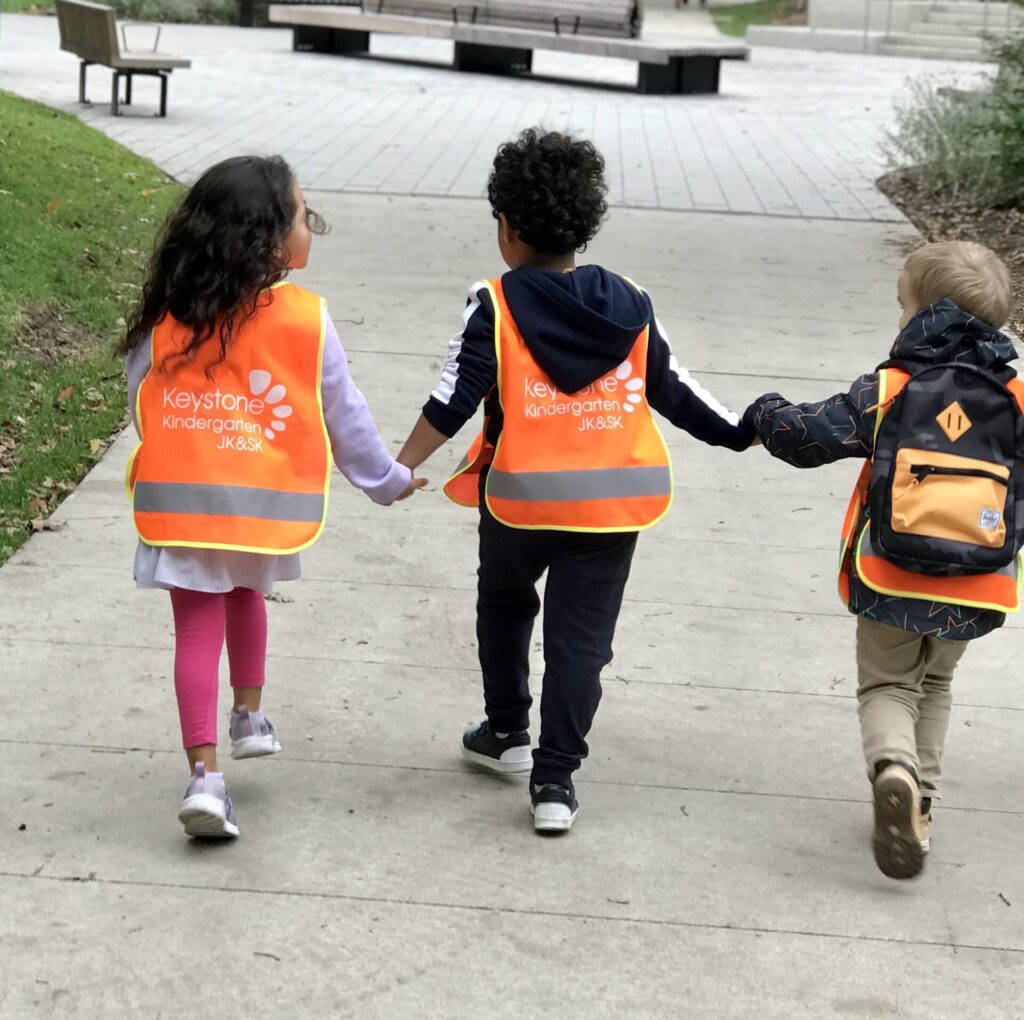
Reggio-Inspired approach emphasizes time spent outdoors
The Reggio-Isnpired curriculum was created after world war II by Loris Malaguzzi in the region of Reggio Emilia, Italy. The original curriculum is Reggio Emilia; however, in North America, we use the name “Reggio-inspired”, as the idea is that it is not possible to facilitate a Reggio Emilia approach outside of the region that it was created. This is mainly in part to the fact that the curriculum itself is based heavily on the culture of the area, which we are obviously not able to replicate here in North- America.
The main objective of this curriculum is learning through a hands-on approach to help children develop their sense of self/identity through different means of expression by giving them the ability to bring forth their ideas through “symbolic languages” (sculptures, painting, drama). Children must have some control over the direction of their learning; they must be able to learn through experiences of touching, moving, listening and observing.
This curriculum is relationship-driven, meaning that children and teachers are co-learners vs. the traditional teacher-pupil relationship. Children are encouraged to work collaboratively with their peers and the classroom is considered the “third teacher”. Reggio-inspired is child-centred and follows the children’s learning cues; It believes in a fluid learning environment wherein children should decide what they want to learn and there is no “fixed” curriculum as learning should be tailored to the child.
More about the Reggio Emilia approach can be found here.
3. Play-Based Approach
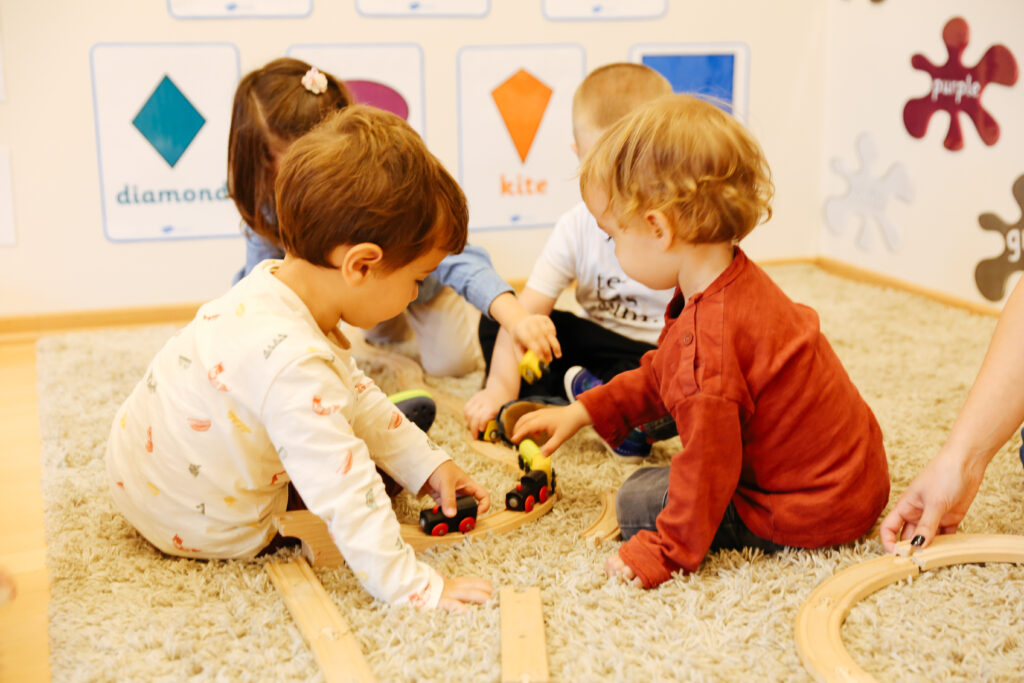
Keystone children playing.
Inquiry-based learning in the gold standard for learning in Ontario and is actually the curriculum used in the Ontario School Board. This approach centres a child’s education around their questions, interests, ideas and observations. This approach is based heavily on up-to-date science and research on child-development Research has shown that when children are interested in what they’re learning, they actually learn better and retain knowledge that it introduced to them. When a child is excited about what they’re learning, they become active participants in their educations, versus passive observers.
This curriculum takes into account the fact that children naturally and instinctively want to play and believes that play-based learning is children processing and applying their knowledge, experiences and views of the world through their play. This curriculum involves a child-initiated and adult-supported learning environment, wherein the educator is actively observing and following and drawing connections between the child’s play and their learning development.
Additionally, hands-on experiences are a crucial element to this approach. Children are provided with tactile learning opportunities to make physical connection to concepts taught. Inquiry-based learning requires mutual respect between the educators and the students, wherein teachers are the facilitators of a child’s education and respect the pace at which a student’s learning happens.
More about play-based approach from the Ontario Ministry of Education can be found here.
What is the curriculum approach at Keystone?
Inquiry-Based Approach
Here at Keystone, we believe in an a holistic, inquiry-based approach. Playing and having fun is what being a kids is all about, so why shouldn’t that translate to the classroom? Research has proven that children will naturally partake in activities that will help them learn and grow; children have an instinctive desire to play and explore, while at the same time possessing an innate desire to be challenged and acquire new skills.
Inquiry-based learning considers all of these elements when curriculum, activities and classrooms are designed! What sets us apart here at Keystone Kindergarten, is that we incorporate a holistic element to our learning approach; we practice mindfulness, love and care of the environment and others. One major way we achieve this is by cultivating authentic relationships between students, their peers and their teachers. By doing this, we create an environment wherein children feel challenged and valued at the same time; conditions that allow children to thrive! Moreover, we incorporate open-ended and recycled materials into the curriculum. As a result, our students develop environmental awareness – this helps children learn respect for the natural world and an understanding of where their things come from!

